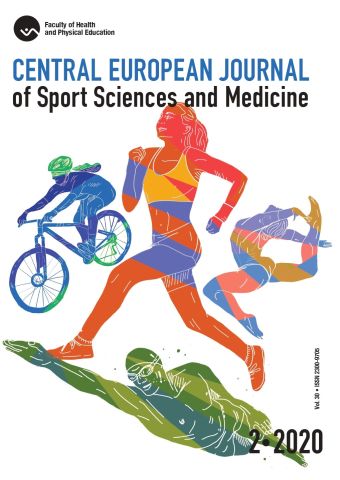
ISSN: 2300-9705
eISSN: 2353-2807
OAI
DOI: 10.18276/cej.2020.2-03




Issue archive /
Vol. 30, No. 2/2020
Physical Education and School Sport of the German Minority in Poland in the Interwar Period of the 20th Century
| Authors: |
Tomasz
Jurek
University School of Physical Education in Poznań, Faculty of Physical Culture in Gorzów Wielkopolski, Poland |
| Keywords: | German minority in Poland school sport physical education of national minorities |
| Data publikacji całości: | 2020 |
| Page range: | 7 (25-31) |
Abstract
In the interwar period of the 20th century, 30% of the total population of Poland was comprised of national minorities. Among them, the German minority of 740 thousand people played a very prominent role. The Germans lived mainly in the western parts of Poland: Pomeranian, Poznań and Silesian voivodeships, as well as in the district of Lodz. The German community was wealthy and influential thanks to the economic traditions and support provided by the German state. In order to stop the process of polonization, the Germans established and developed numerous forms of economic, cultural and social activity. They were very active in the area of physical culture. Their activities included taking great care of the development of physical education and sport in German schools at both primary and secondary education level. Physical education classes were taught and school sports competitions were organized. Physical education was one of the most popular school subjects and was intended to preserve the “German spirit” among pupils. The majority of German schools had a curriculum in place that included two hours of physical education per week and some of them even four hours of PE classes per week. The best teaching staff and sports facilities were to be found in private schools, especially secondary schools, where physical education and school sports enjoyed a very prominent status.
Download file
Article file
Bibliography
| 1. | Archive of New Files [Archiwum Akt Nowych Warszawa]. Ministerstwo Wyznań Religijnych i Oświecenia Publicznego, 162, p. 239; 193, pp. 7, 105, 208-210. |
| 2. | Bierschenk, T. (1988). Der Vereine Deutscher Hochschüler in Polen 1922-1939. Hannover, pp. 96-98. |
| 3. | Dąbrowski, R. (1978). Życie kulturalno-oświatowe mniejszości niemieckiej w Polsce w dwudziestoleciu międzywojennym (1918-1939). Zeszyty Naukowe Wyższej Szkoły Pedagogicznej w Szczecinie, 23, 204. |
| 4. | Deutsche Schulzeitung in Polen 19/20 (1926). Festnummer zur 5. Verbandstagung des LVdLLP am 3-5 Juli 1926 in Posen, pp. 228-230. |
| 5. | Deutsche Schulzeitung in Polen 19/20 (1932). |
| 6. | Deutsche Schulzeitung in Polen, 3 (1935). |
| 7. | Deutsche Schulzeitung in Polen, 8/9, pp.133134. |
| 8. | Federal Archives [Bundesarchiv Berlin], Deutsche Stiftung, file no. 447, p. 364. |
| 9. | Federal Archives [Bundesarchiv Berlin], Deutsche Stiftung, file no. 447, pp. 251, 301. |
| 10. | Federal Archives, [Bundesarchiv Berlin], Deutsche Stiftung, 447, p. 346. |
| 11. | Hauser, P. (1998). Mniejszość niemiecka na Pomorzu w okresie międzywojennym. Poznań, pp. 197-199. |
| 12. | Iwanicki, M. (1984). Legalne i nielegalne szkolnictwo niemieckie w Polsce w okresie międzywojennym. In: A. Czubiński (ed.), Rola mniejszości niemieckiej w rozwoju stosunków politycznych w Europie 19181945 (pp. 374-375). Poznań. |
| 13. | Jahresbericht der Direktion des Staatsgymnasiums mit deutscher Unterrichtssprache in Bielitz fur das Schuljahr 1924/1925 (1925). Bielitz, p. 22. |
| 14. | Jahresbericht der Direktion des Staatsgymnasiums mit deutscher Unterrichtssprache in Bielitz fur das Schuljahr 1928/1929 (1929). Bielitz, pp. 22-23. |
| 15. | Jurek, T. (1999). Rola Instytutu J.G. Herdera w Marburgu w badaniach regionalnych. Nadwarciański Rocznik Historyczno-Archiwalny, 6/2, pp. 177-180. |
| 16. | Jurek, T. (2002). Kultura fizyczna mniejszości niemieckiej w Polsce w latach 19181939, Gorzów Wlkp., Poznań: Polskie Towarzystwo Naukowe Kultury Fizycznej Sekcja Historii. |
| 17. | Komolka, M. (1984). Szkolnictwo dla mniejszości niemieckiej w Lesznie w okresie międzywojennym. In: A. Czubiński (ed.), Rola mniejszości niemieckiej w rozwoju stosunków politycznych w Europie 19181945 (pp. 391-392). Poznań. |
| 18. | Mały Rocznik Statystyczny 1938 (1939). Warszawa. |
| 19. | Mauersberger, S. (1968). Szkolnictwo powszechne dla mniejszości narodowych w Polsce w latach 1918-1939. Wrocław, p. 159 et seqq. |
| 20. | National Archives [Archiwum Państwowe Bydgoszcz]. Urząd Wojewódzki Pomorski, file no. 4604, p. 127. |
| 21. | Posener Tageblatt (1925). 154. |
| 22. | Statystyka Polski. Drugi Powszechny Spis Ludności z dnia 9 grudnia 1931 r. (1938). Warszawa. |
| 23. | Statystyka Polski. Pierwszy Powszechny Spis Ludności Rzeczypospolitej Polskiej z dnia 30 września 1921r. (1927). Warszawa. |